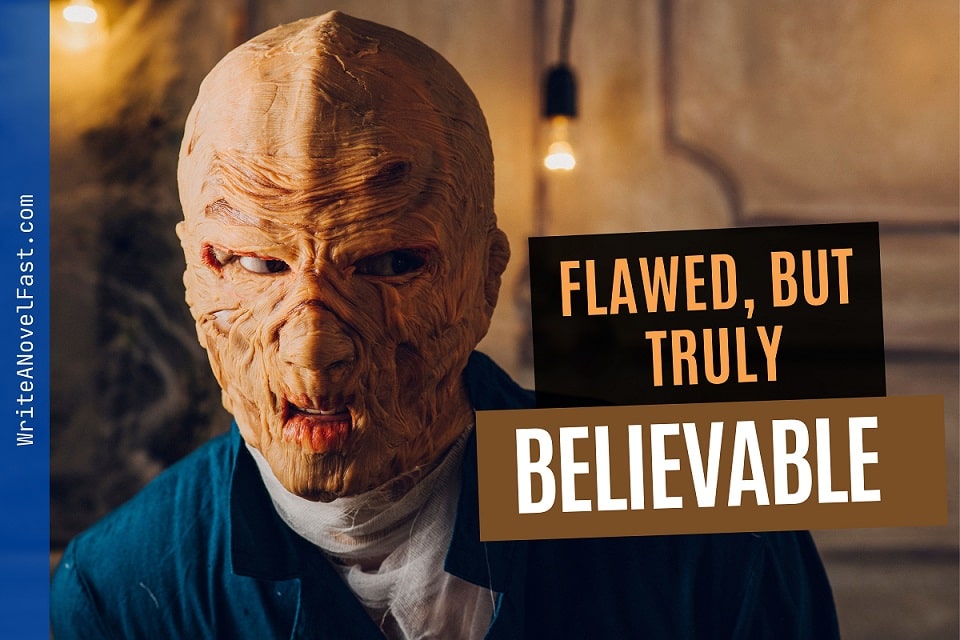Let’s go deep in character flaws that feel real. Have you ever read a character that felt more like a checklist than a person? Maybe they were “too clumsy,” “too shy,” or “too perfect”—so obviously flawed that it felt like the author was waving a flag saying, “Hey, look, they’re relatable!” But you didn’t believe it. Why?
Because real people are messy, layered, and full of contradictions—and our characters should be too.
In this post, let’s dig into how to write character flaws that feel real, the kind that readers connect with emotionally. Not just quirks or gimmicks, but honest imperfections that shape how a character sees the world, reacts under pressure, and grows over time.
Grab your notebook and your favorite cup of something warm—we’re diving deep into the beautifully broken parts of our characters.
Table of content
- Why Real Flaws Matter More Than Clever Ones
- The Difference Between Surface Quirks and Emotional Wounds
- Popular (and Powerful) Flaws That Actually Resonate
- In My Own Experience, I Found That…
- Let the Flaw Create Conflict
- Give Them Room to Grow (But Not Fully “Fix” Them)
- FAQs: Writing Realistic Character Flaws
- Final Thoughts: Imperfectly Perfect
Why Real Flaws Matter More Than Clever Ones
A flaw isn’t just a trait—it’s the emotional lens through which a character lives their story.
Think of Frodo in The Lord of the Rings. His flaw isn’t just temptation; it’s the deep vulnerability that makes him human. Or take Elizabeth Bennet from Pride and Prejudice. Her pride and quick judgment aren’t just literary devices—they shape her entire journey and transformation.
Character flaws that feel real work when they’re more than skin-deep. They’re internal roadblocks—something that gets in the way of what the character wants and needs. They create tension, conflict, and, eventually, growth.
The Difference Between Surface Quirks and Emotional Wounds
It’s easy to confuse flaws with quirks. A character who bites their nails, wears mismatched socks, or says weird things in public might seem quirky, but unless those behaviors are rooted in something deeper—fear, trauma, insecurity—they won’t feel authentic.
Let’s say your protagonist lies often. If she lies because “it makes her interesting,” it won’t land. But if she lies because as a child, telling the truth led to punishment or shame, now we’re getting somewhere.
Real flaws come from wounds. Emotional ones. That’s what makes them believable. When readers sense the history behind a character’s flaw, it triggers empathy—and that’s gold.
Popular (and Powerful) Flaws That Actually Resonate
Here are a few character flaws that feel real because they’re rooted in universal emotions:
- Insecurity – A character who overcompensates, maybe always needs to prove themselves (think Katniss Everdeen’s guardedness).
- Impulsiveness – Makes decisions too quickly, leading to chaos (like Percy Jackson diving in headfirst).
- Guilt – Can’t move on from past mistakes, leading to self-sabotage (Snape, anyone?).
- Stubbornness – Refuses to accept help or change their mind (Arya Stark comes to mind).
- Control issues – Needs to micromanage everything, secretly afraid of being helpless.
When these flaws shape choices and consequences, they stop feeling like “writing tools” and start feeling like truth.
In My Own Experience, I Found That…
There was a time I wrote a character who was “too perfect.” She was brave, smart, sarcastic—everything I admired. But readers didn’t connect with her. Something was missing.
After rewriting her for the third time, I realized I was afraid to make her weak. I didn’t want her to feel broken, or worse—unlikable. So I gave her a flaw: she pushed people away when she felt vulnerable. Suddenly, she wasn’t just brave—she was afraid to be seen. That changed everything.
In my own experience, I found that flaws work best when they come from a place of truth. The moment you allow your character to crack, you let light (and readers) in.
Let the Flaw Create Conflict
Here’s the secret sauce: a good flaw should cause problems.
If your character’s flaw doesn’t interfere with their goals, it’s just decoration. But if it trips them up, causes them to hurt others (or themselves), and pushes them to confront uncomfortable truths—that’s when it becomes powerful.
Let’s say your protagonist is overly perfectionistic. At first, they get praised for being detail-oriented. But as pressure mounts, their flaw turns inward—they freeze up, avoid delegation, and isolate themselves.
The plot moves because the flaw is in the way. And that’s exactly how real life works, isn’t it?
Give Them Room to Grow (But Not Fully “Fix” Them)
Readers love watching characters change. But here’s the trick—don’t erase the flaw. Just evolve it.
Maybe your character with trust issues finally opens up… a little. Maybe the impulsive hero learns to pause, but still takes wild chances now and then. It’s not about perfection. It’s about progression.
That’s what makes character flaws that feel real so satisfying: they give readers hope. If this character can grow, maybe we can too.
FAQs: Writing Realistic Character Flaws
Q1: What’s the biggest mistake writers make with writing character flaws that feel real?
Trying too hard to “design” a flaw instead of letting it emerge naturally from the backstory or theme.
Q2: Can a flaw make my character unlikable?
Yes—and that’s okay. Give them context, vulnerability, and a hint of growth. Readers will stick around.
Q3: Should villains have flaws too?
Absolutely. The best villains mirror the hero’s flaws, just taken to the extreme.
Q4: Can I give a character more than one flaw?
Of course! Just don’t overload them. Pick one dominant flaw and maybe one secondary trait that supports it.
Final Thoughts: Imperfectly Perfect
At the end of the day, we connect most with characters who remind us of ourselves—not because they’re polished, but because they’re cracked in familiar places.
Writing character flaws that feel real is about more than craft. It’s about compassion. When you let your characters mess up, spiral, and heal, you’re telling your readers, “Hey—it’s okay to be human.”
So go ahead. Let your hero screw up. Let your villain cry. Let your sidekick carry quiet shame. That’s where the real magic happens.
Happy writing. 💙



